Chacabuco! Just the name of the place is so remote and exotic, I was really looking forward to being here. We are right in the thick of the Patagonian wilderness area here now – the sort of place people used to only visit with a sturdy backpack and a pair of Scarpa hiking boots. Amazing that the cruise industry is embracing such out of the way places.
We got to port and easily found our tour group, thanks to the handy sign posted in the bus window. Several of the pax were kind enough to tell me that they had misspelled my name; the ‘u’ is missing apparently. 🙂 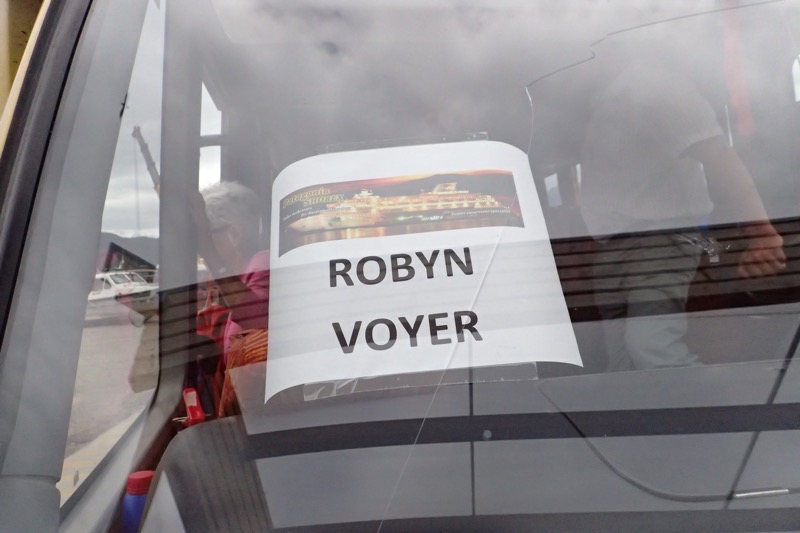
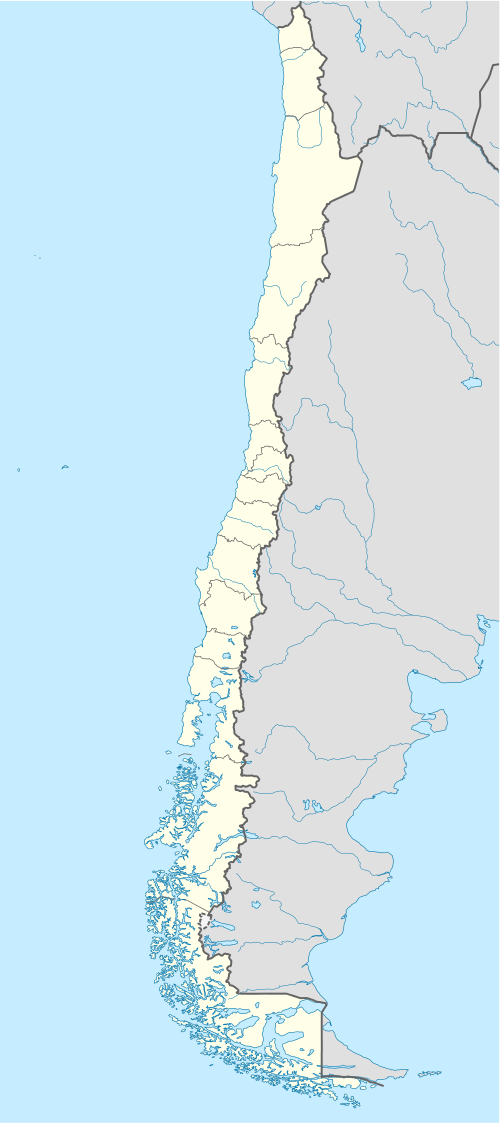
We got a busload of characters today… 21 of them in fact. This is one of the largest groups I had organised. We were tendering again – so we arranged to meet as early as possible to get to shore and maximise our day. The security staff were none too happy with us lining up for tender tickets an hour before the tender operation was scheduled to start, but after being hours late at each other tender port, we were keen to get a jump on being at the front of the line. It worked – we managed to get the first tenders and were ashore in good time for a full day of driving through Puerto Chacbuco, Puerto Aysen, the Simpson River National Park and the township of Coyhaique.
We met our lovely guide, Denisse at the port and she confessed to me that this was her “first day touring these area, her biggest group so far, and her English is still learning”. Denisse was a gorgeous outgoing soul, and so much fun!
Our first stop on our little tour of Chacabuco and surrounds was the Cascada de la Virgen. Pretty self explanatory I guess, a lovely little set of rapids set on a mountain side that the locals had set up a small colourful shrine/altar. Apparently Commander Enrique Simpson Baeza, for which much of the region is named, said he saw the ‘la virgen, la Santa Maria’ appear in the falls here – though our lovely guide Denisse, thinks it is more likely he was just drunk! 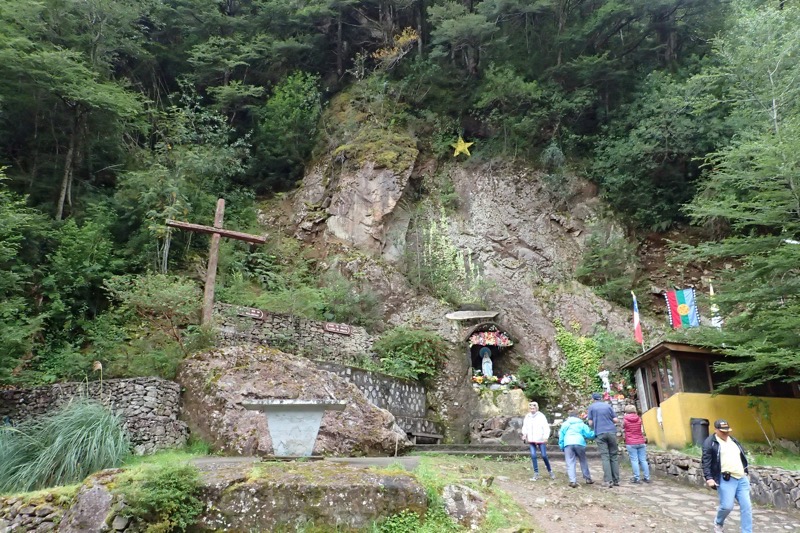
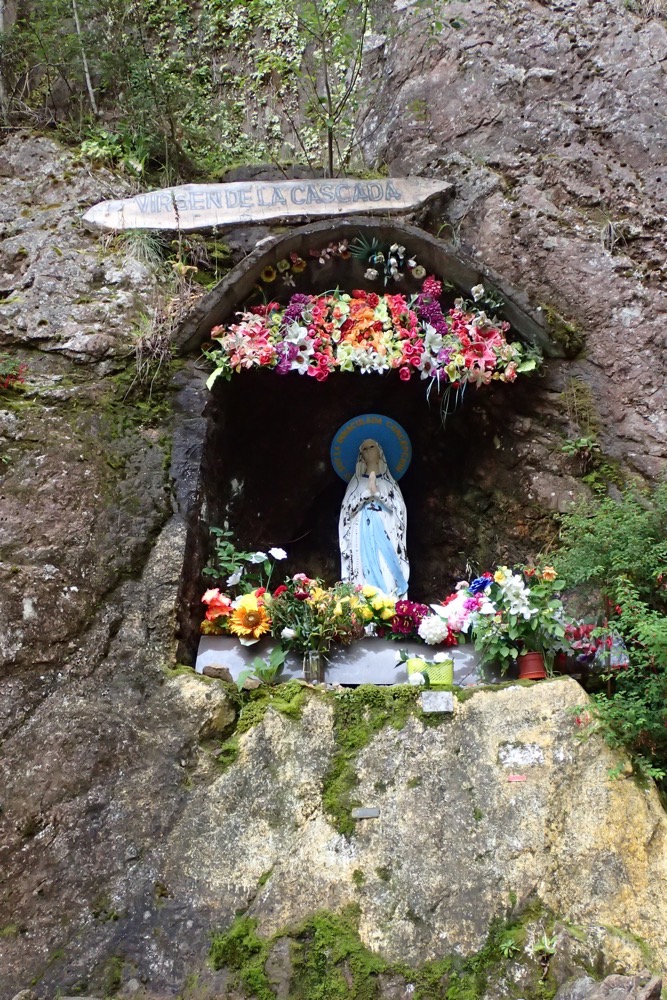
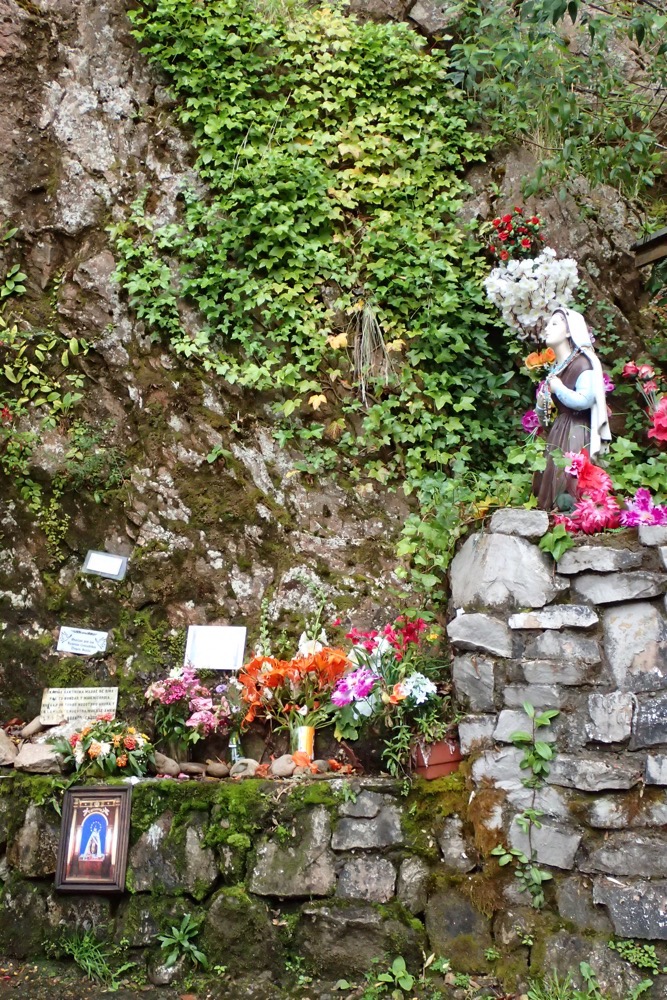
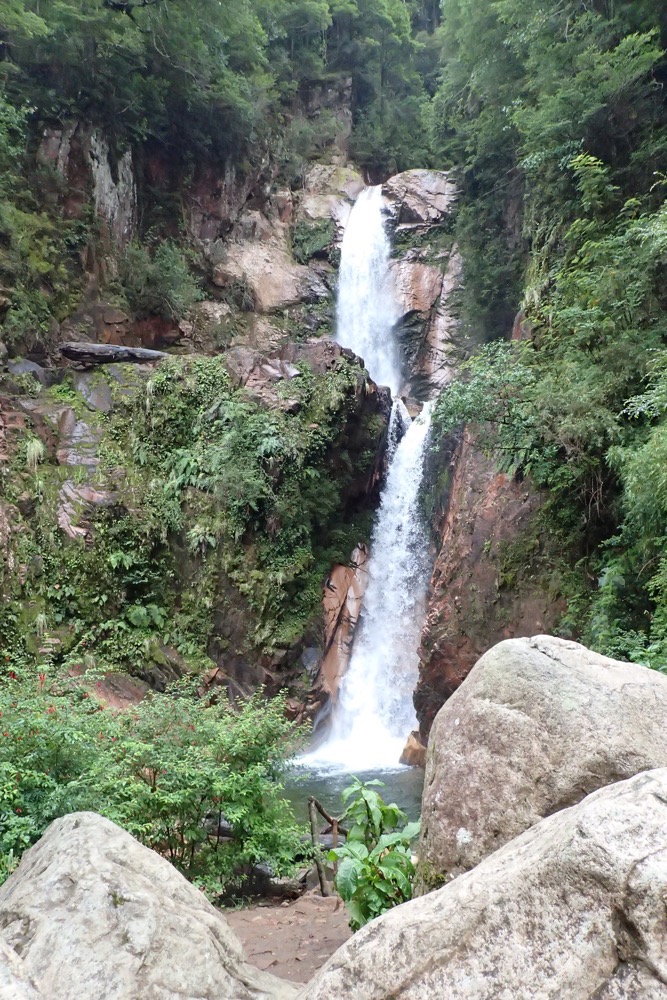
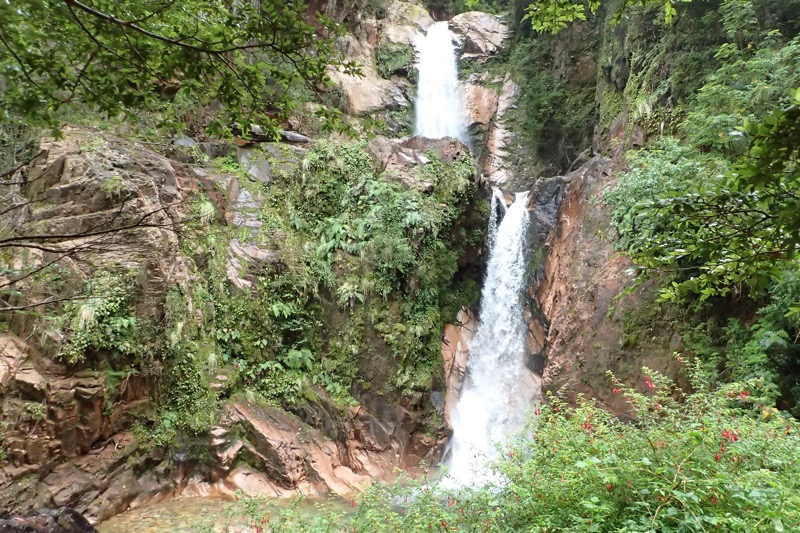 We then enjoyed an amazing view on the way to the Simpson River National Park – which we were informed by our friend and fellow traveller, Jerry, is the fourth best salmon fishing in the entire world! Salmon up to 45kgs have been caught here – that is like, over two bags of concrete, or the equivalent of nine Alaska puppies!
We then enjoyed an amazing view on the way to the Simpson River National Park – which we were informed by our friend and fellow traveller, Jerry, is the fourth best salmon fishing in the entire world! Salmon up to 45kgs have been caught here – that is like, over two bags of concrete, or the equivalent of nine Alaska puppies!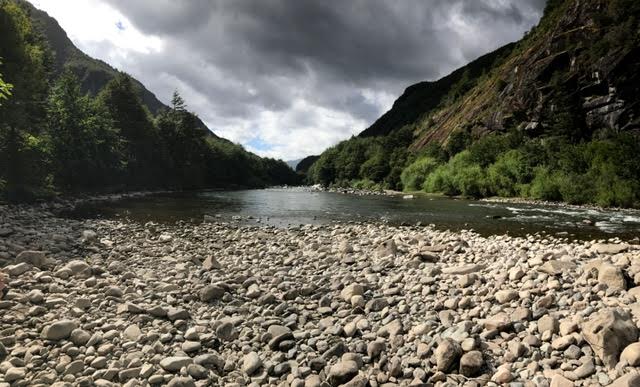 This whole area is comprised of sweeping landscapes created by volcanos and glaciers. It has a very dramatic feel around every corner and you find yourself taking hundreds of photos that will probably never see the light of day. Lots of speed-landscape photography today out the bus windows as we moved through some of the most gorgeous scenery I have ever seen.
This whole area is comprised of sweeping landscapes created by volcanos and glaciers. It has a very dramatic feel around every corner and you find yourself taking hundreds of photos that will probably never see the light of day. Lots of speed-landscape photography today out the bus windows as we moved through some of the most gorgeous scenery I have ever seen.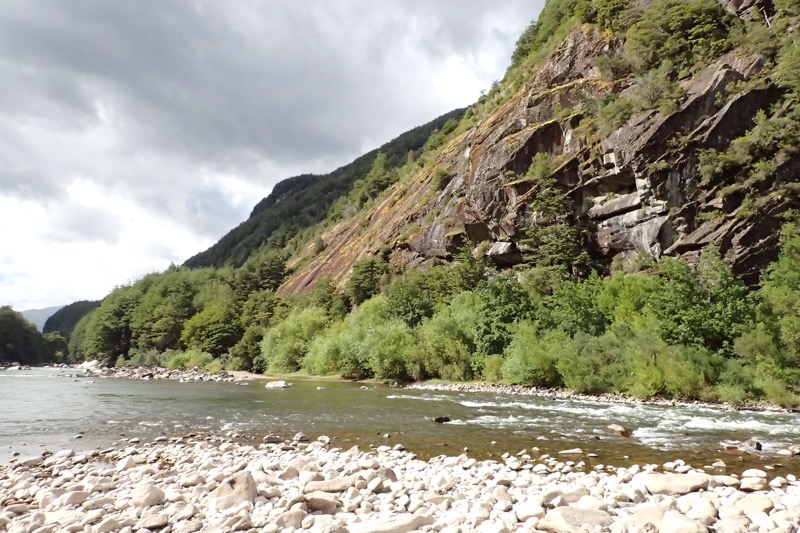
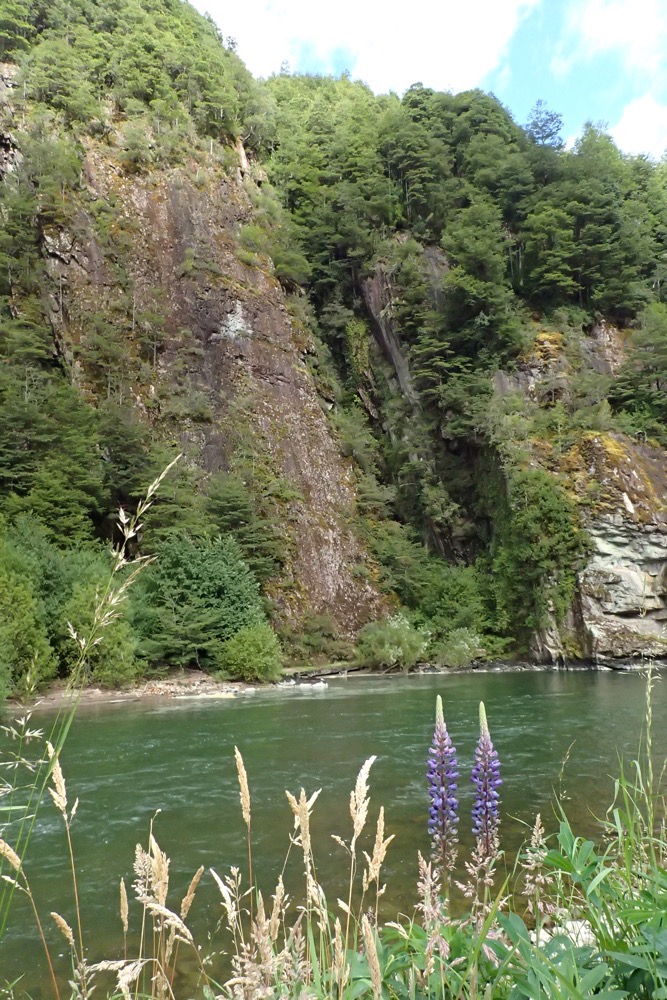 I love the colours of the glacial rivers – it has a very distinctive, blue/green/grey. I’ve only ever seen it in New Zealand, Canada, and Iceland, but it’s always so beautiful.
I love the colours of the glacial rivers – it has a very distinctive, blue/green/grey. I’ve only ever seen it in New Zealand, Canada, and Iceland, but it’s always so beautiful.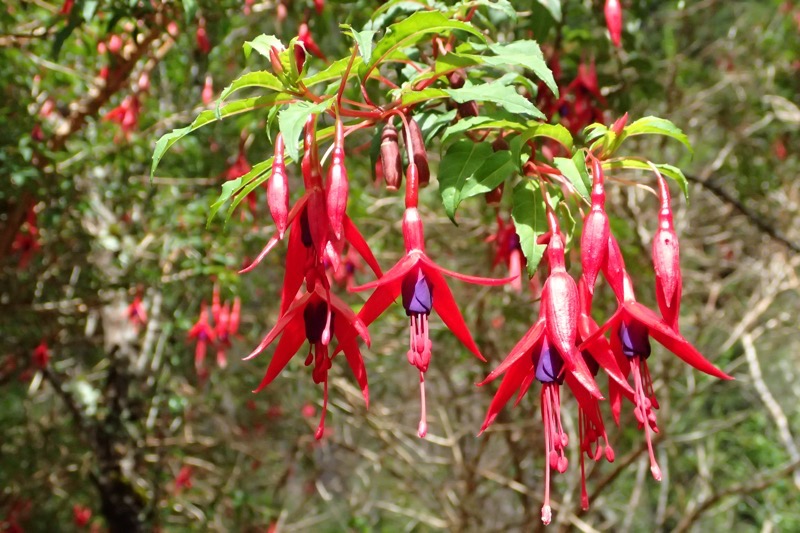 Denisse told me what this plant was called – but for the life of me, I can’t recall… and uncharacteristically, I forgot to write it down. I will endeavour to look it up and add it in later. (Edit: they’re fuchsias… *rolls eyes*)
Denisse told me what this plant was called – but for the life of me, I can’t recall… and uncharacteristically, I forgot to write it down. I will endeavour to look it up and add it in later. (Edit: they’re fuchsias… *rolls eyes*)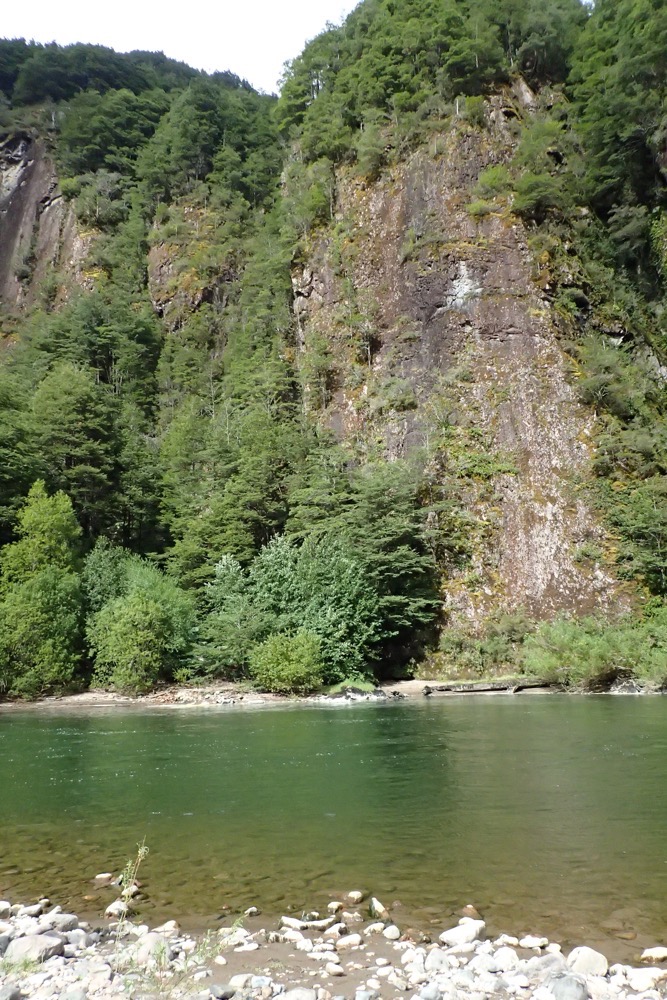
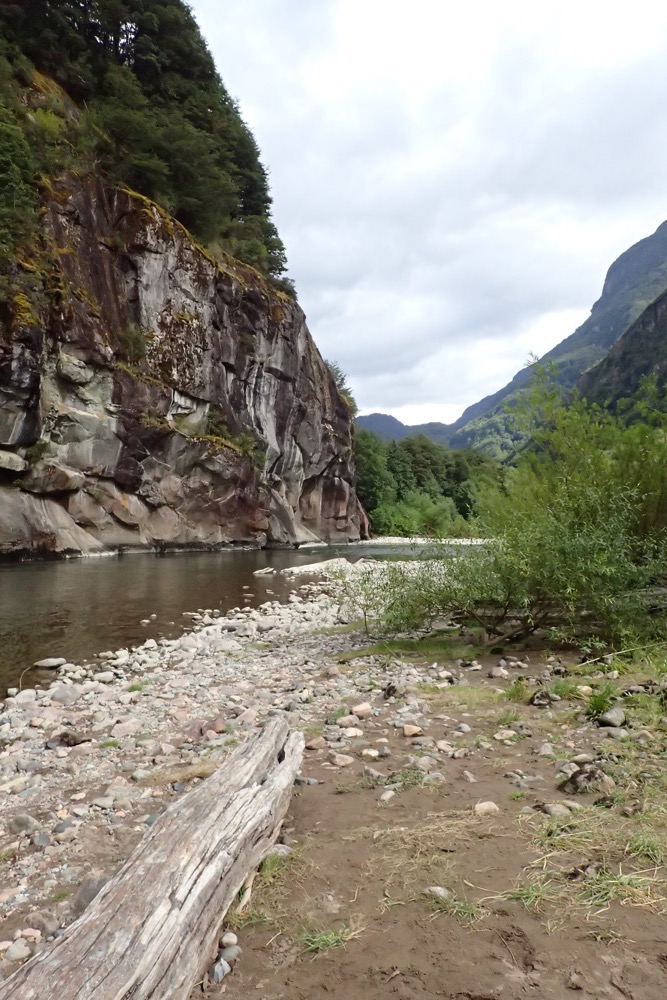 Just so many beautiful views of craggy and jagged peaks, with snow capped mountains, as we moved alongside the river for a bit of a walk. Then back to the bus and we drove off towards Coyhaique (Ko-yay-kwi). The landscape is completely unspoiled, you can see why so many National Geographic covers seem to come from the pristine wilds of Patagonia, and why it is on every serious hiker’s, ‘Must Do’ list.
Just so many beautiful views of craggy and jagged peaks, with snow capped mountains, as we moved alongside the river for a bit of a walk. Then back to the bus and we drove off towards Coyhaique (Ko-yay-kwi). The landscape is completely unspoiled, you can see why so many National Geographic covers seem to come from the pristine wilds of Patagonia, and why it is on every serious hiker’s, ‘Must Do’ list.
It seemed to go on indefinitely, long stretches of beautiful valleys with the gently trickling rapids of the Simpson River running through it. The Rio Simpson National Reserve covers around 256 square miles, and not only do photographers and nature lovers flock to the area, but scientist do as well. The forests are evergreen, and have a lot of various pine trees, canelo and cinnamon trees. Everything is lush and green – but also being so heavily wooded, very prone to bush fires.
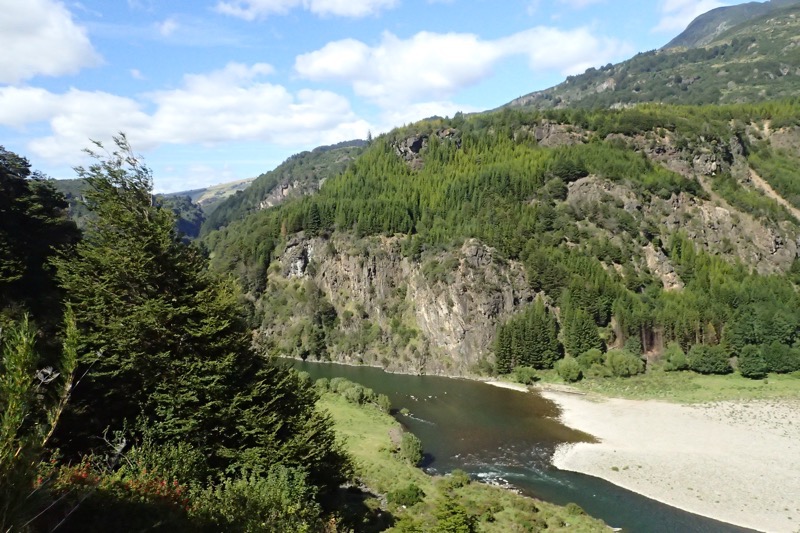 This is the view from a lookout that over looks Coyhaique. The enormity of it is not adequately captured, but you can get a rough idea from this panorama of how spectacularly beautiful the region is. Coyhaique is considered the ‘Capital of Patagonia’, and if all the NorthFace, Patagonia and Katmandu hiking stores are anything to go by, I dare say it lives up to its reputation.
This is the view from a lookout that over looks Coyhaique. The enormity of it is not adequately captured, but you can get a rough idea from this panorama of how spectacularly beautiful the region is. Coyhaique is considered the ‘Capital of Patagonia’, and if all the NorthFace, Patagonia and Katmandu hiking stores are anything to go by, I dare say it lives up to its reputation.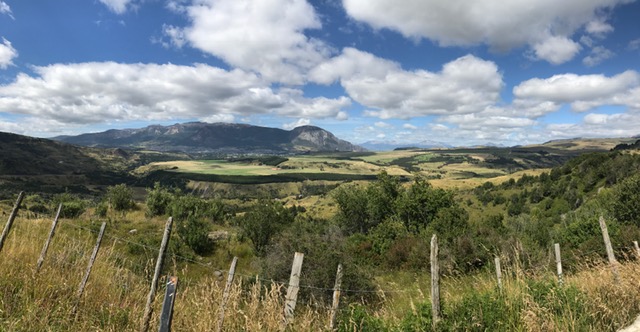
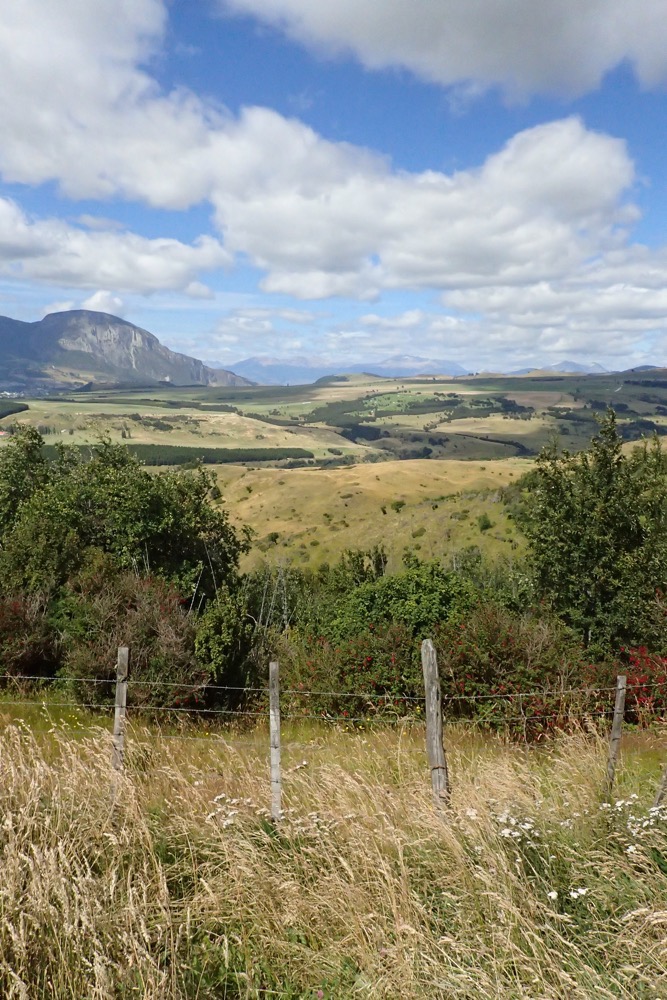 There were cyclists and backpackers aplenty in the town and all enjoying a beautiful summer day. Coyhaique is a blend of modern and traditional architecture surrounded by the forests on every side. The Andes Mountain range surrounds you in every direction.
There were cyclists and backpackers aplenty in the town and all enjoying a beautiful summer day. Coyhaique is a blend of modern and traditional architecture surrounded by the forests on every side. The Andes Mountain range surrounds you in every direction.
After a quick stop in Coyhaique, we went back to Puerto Aysen to see their famous (and somewhat dubious stable) vehicular suspension bridge. While walking on the bridge, we noticed that we were able to jump up and down, such that it caused the bridge to sway! It really was quite disconcerting to be able to affect a bridge built for cars with two people jumping up and down! So glad our bus stayed just on the one side of it!
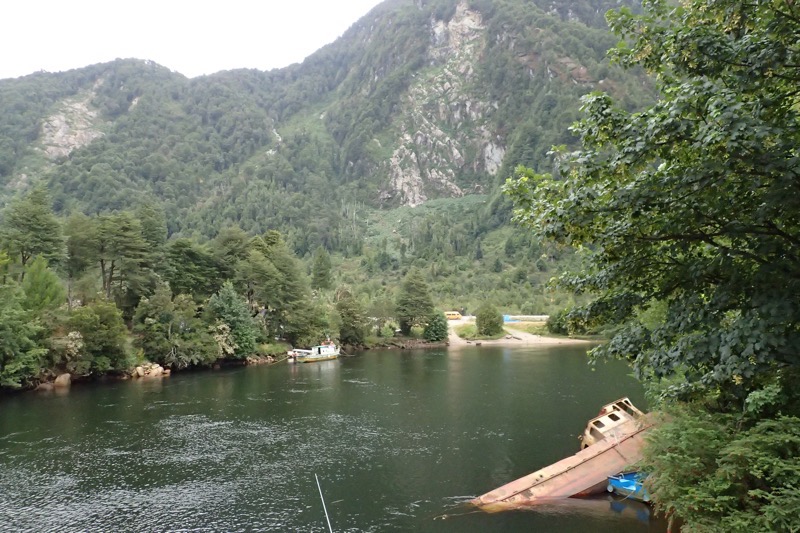 The ship in the pic above was swept this far inland during a tsunami, there are many ships and boats that are laying around wrecked as a reminder of how volatile the geography and the climate can be in this region – earthquakes, subsequent tsunamis, volcanos! I’m not sure how these people are as laid back as they appear to be living with these sorts of disastrous threats.
The ship in the pic above was swept this far inland during a tsunami, there are many ships and boats that are laying around wrecked as a reminder of how volatile the geography and the climate can be in this region – earthquakes, subsequent tsunamis, volcanos! I’m not sure how these people are as laid back as they appear to be living with these sorts of disastrous threats.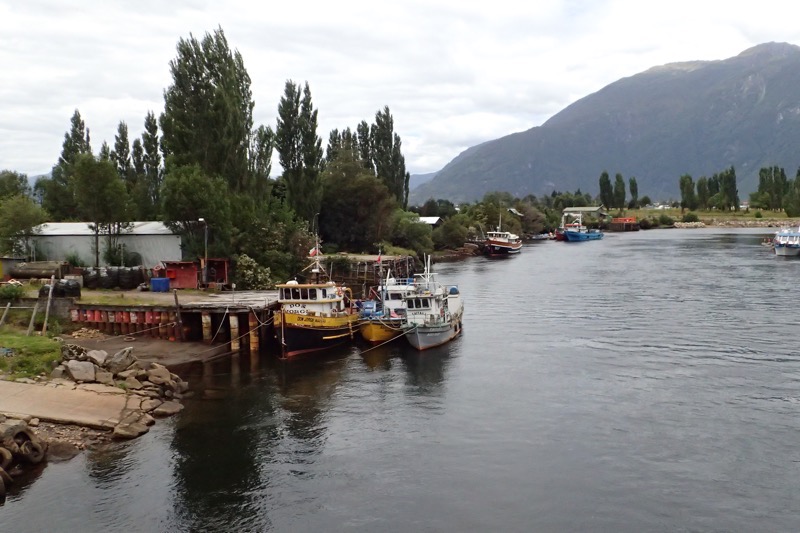
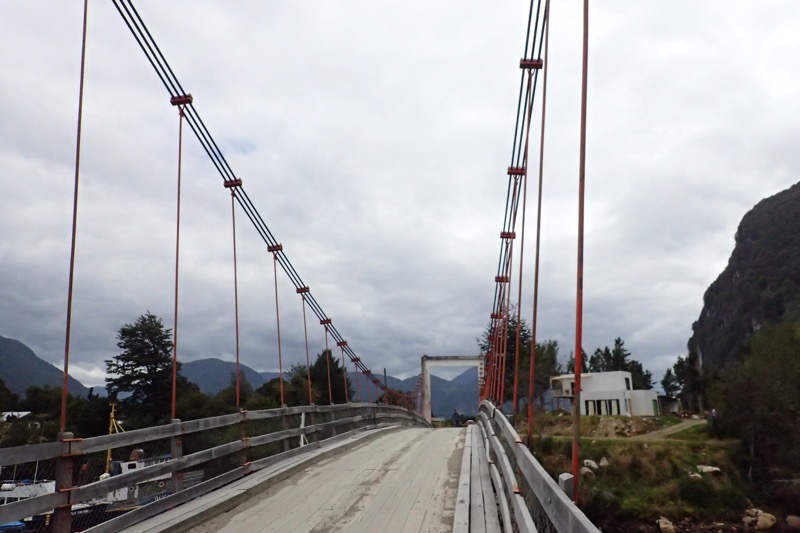
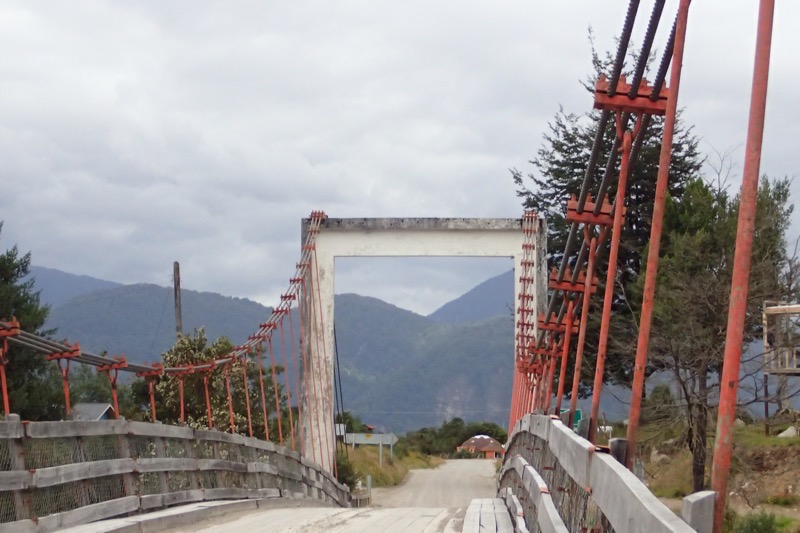
Puerto Aysen – packed cheek to jowl…
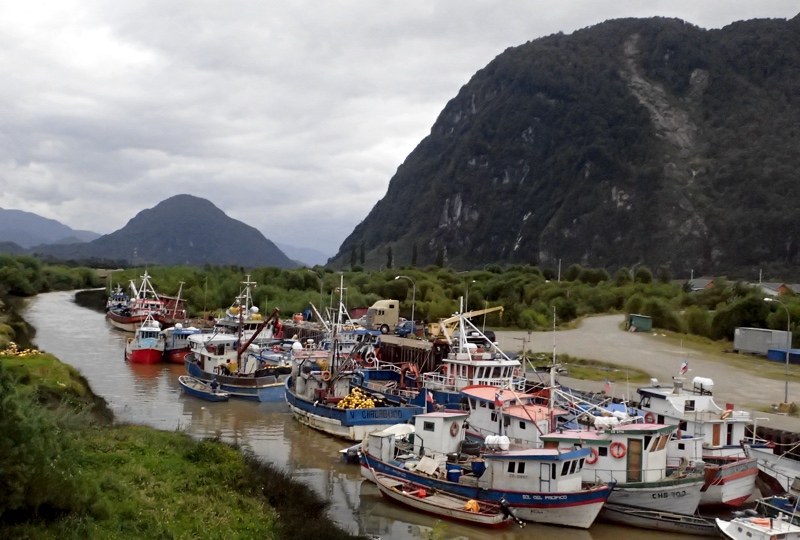
Lastly we had a short drive back through Chacbuco to the port. Chacabuco is a town of 22,000 people. Many of whom are engaged in either the fishing or tourism industries. I found the houses of Chacabuco both charming and alarming in equal measures! Run down and in sad need of a lick of paint, many families live in these very rustic homes.
 Look at this… it’s gorgeously quaint, but I can’t imagine what its occupants would think of our cookie-cutter suburbia with its manicured lawns, matching gutters and window frames, and identical driveways. So much character in this house, you almost wish it could talk; and then are immediately concerned for what it may have to say!
Look at this… it’s gorgeously quaint, but I can’t imagine what its occupants would think of our cookie-cutter suburbia with its manicured lawns, matching gutters and window frames, and identical driveways. So much character in this house, you almost wish it could talk; and then are immediately concerned for what it may have to say!
We had an amazing day out just absorbing the natural beauty of the Chacabuco and Coyhuaique regions. I didn’t dig too much into the history and culture of the area today, but just took the time to drink it all in!
